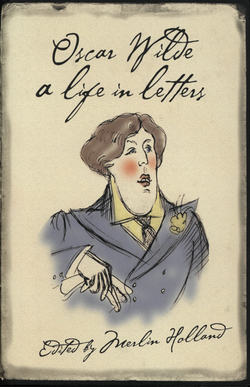Читать книгу Oscar Wilde: A Life in Letters - Оскар Уайльд, Merlin Holland, F. H. Cornish - Страница 9
To Sir William Wilde
ОглавлениеTuesday [15 June 1875] Florence
Went in the morning to see San Lorenzo, built in the usual Florentine way, cruciform: a long aisle supported by Grecian pillars: a gorgeous dome in the centre and three small aisles leading off it. Behind it are the two Chapels of the Medici. The first, the Burial Chapel, is magnificent; of enormous height, octagonal in shape. Walls built entirely of gorgeous blocks of marble, all inlaid with various devices and of different colours, polished like a looking-glass. Six great sarcophagi of granite and porphyry stand in six niches: on top of each of them a cushion of inlaid mosaic bearing a gold crown. Above the sarcophagi are statues in gilded bronze of the Medici; on the dome, of course, frescoes and gilded carving.
The other chapel is very small, built simply of white marble. Two mausoleums in it to two great Medici; one bearing Michelangelo’s statues of Night and Morning and the other those of Evening and Dawn.
Then to the Biblioteca Laurenziana in the cloisters of San Lorenzo, where I was shown wonderfully illuminated missals and unreadable manuscripts and autographs. I remarked the extreme clearness of the initial letters in the Italian missals and bibles, so different from those in the Book of Kells etc., which might stand for anything. The early illuminations are very beautiful in design and sentiment, but the later are mere mechanical tours de force of geometrical scroll-work and absurd designs.
Then to the Etruscan Museum, which is in the suppressed monastery of San Onofrio and most interesting. You come first to a big tomb, transplanted from Arezzo; Cyclopean stonework, doorway with sloping jambs and oblong lintel, roof slightly conical, walls covered with wonderfully beautiful frescoes, representing first the soul in the shape of a young man naked, led by a beautifully winged angel or genius to the two-horsed chariot which is to convey them to Elysium – and then represents the banquet which awaits him. This same idea of the resurrection of the soul and a state of happiness after death pervades the whole system of Etruscan art. There were also wonderful sarcophagi which I have roughly drawn for you. [Overleaf]
On the top the figure of the dead man or woman holding a plate containing the obol for paying the ferryman over Styx. Also extraordinary jars with heads and arms – funeral of course – I have drawn them. The sarcophagi, of which there are over a hundred and fifty to be seen, are about two and a half feet long and about three feet high. The sides of the sarcophagi are sculptured with the achievements and adventures of the dead man, mostly in bas-relief which are sometimes coloured. There were some with frescoes instead of sculpture, beautifully done. Of course urns and vases of every possible shape, and all painted exquisitely.
A great collection of coins, from the old as, a solid pound weight of metal about as big as a large bun and stamped with a ship on one side and a double-faced Janus on the other, down to tiny little gold coins the same size as gold five-franc pieces. The goldsmiths’ work for beauty of design and delicacy of workmanship exceeded anything I have ever seen. As I was kept there for a long time by an awful thunderstorm I copied a few which I send you.
I cannot of course give you the wonderful grace and delicacy of workmanship, only the design. Goblets and bowls of jasper and all sorts of transparent pebbles – enamelled jars in abundance. Swords of the leaf shape, regular torques but somewhat same design, metal hand-mirrors, and household utensils of all kinds, and every thing, even the commonest plate or jug, done with greatest delicacy and of beautiful design. They must have been a people among whom artistic feeling and power was most widely spread. There is also a museum of Egyptian antiquities, but their devices and frescoes appeared to me grotesque and uncouth after the purity and sentiment of the Etruscan. You would have been much interested in all the Etruscan work: I spent two delightful hours there.
In the evening I dined at a restaurant on top of San Miniato, air delightfully clear and cool after the thunderstorm. Coming back I met just opposite the Pitti Palace a wonderful funeral; a long procession of monks bearing torches, all in white and wearing a long linen veil over their faces – only their eyes can be seen. They bore two coffins and looked like those awful monks you see in pictures of the Inquisition.
Mahaffy is not come yet. I do hope he will arrive today, as I shan’t be able to stay much longer away. Today is the anniversary of the birth of Michelangelo: there will be great fetes.
Hope Abbotstown will turn out well. It certainly spoiled the look of the place, and that terrible large ditch between us and it will, I suppose, be bridged over. Yours ever truly affectionately OSCAR O’F. WI. WILDE
